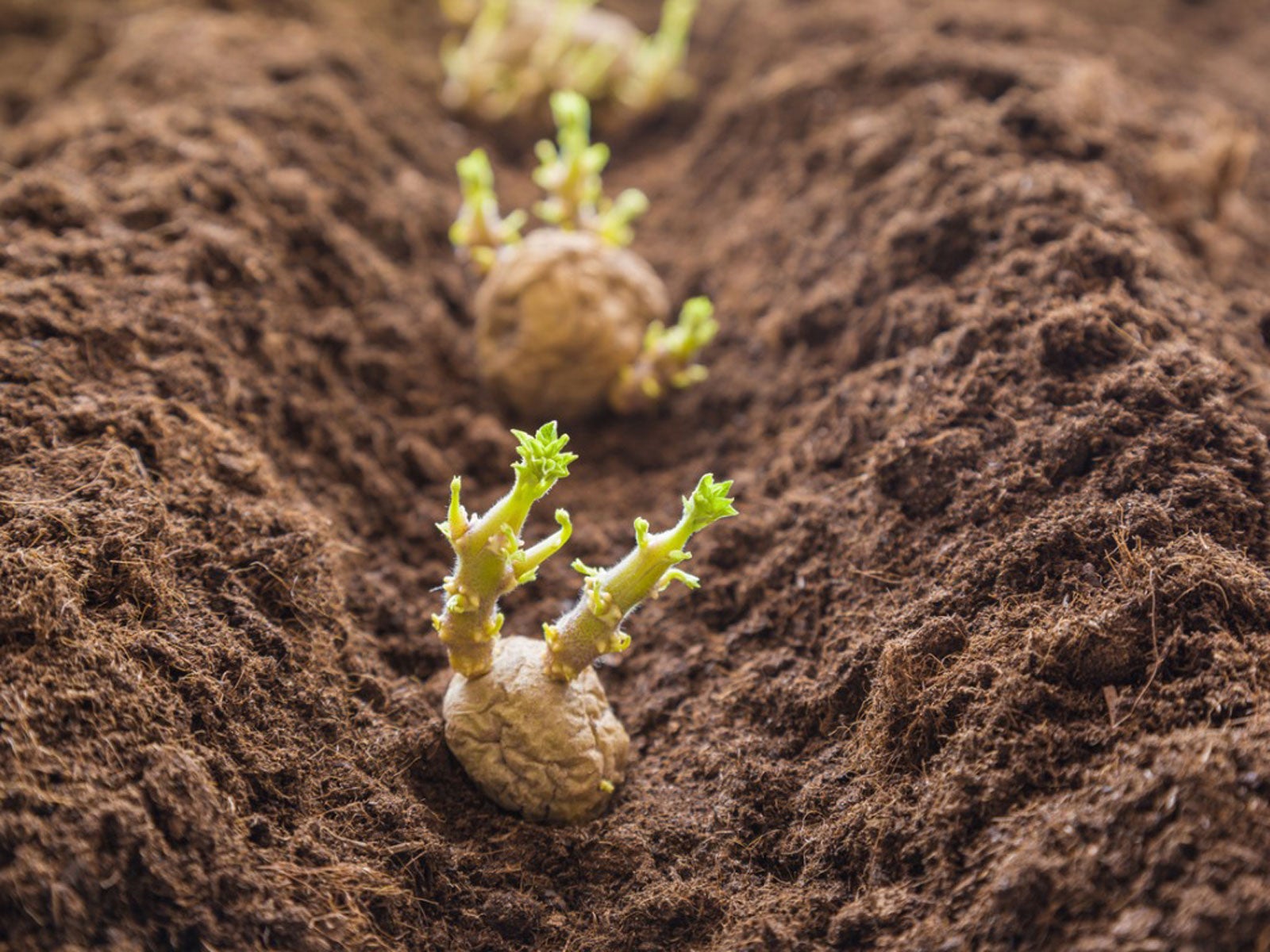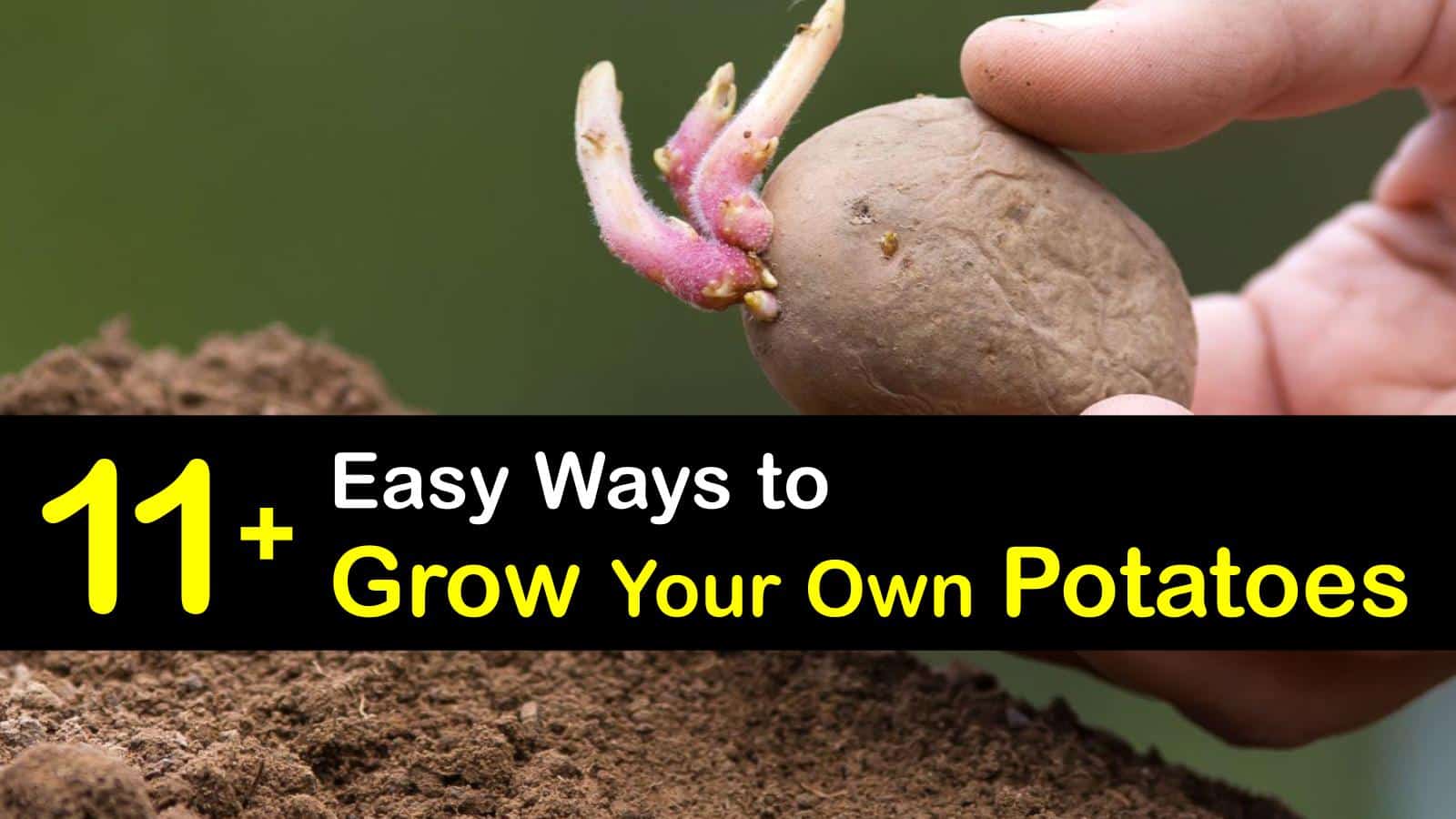What are Potato Eyes and Can You Plant Them?
Potato eyes are the small, bud-like structures found on potatoes that have the potential to grow into new plants. While it’s a common misconception that you can simply plant a potato eye and expect it to thrive, the reality is that not all potato eyes are created equal. In fact, planting a raw potato eye can lead to disease, rot, and poor yields. So, can you plant potato eyes? The answer is yes, but it requires some knowledge and preparation. Potato eyes are a great way to propagate potatoes, but they need to be handled and planted correctly to ensure a successful harvest. In this article, we’ll explore the world of potato propagation, providing a comprehensive guide on how to successfully plant potato eyes and unlock their full potential.
The Science Behind Potato Propagation
Potato plants grow from seed potatoes, which are essentially mature potatoes that have been allowed to sprout. The process of propagation begins with the formation of eyes, which are the small, bud-like structures found on the potato. These eyes are actually the nodes from which new stems and roots will grow. As the seed potato begins to sprout, stolons emerge from the eyes, eventually forming tubers. The stolons are long, underground stems that connect the tubers to the parent plant, allowing them to receive nutrients and water. Understanding the biology of potato plants is crucial for successful propagation, as it allows growers to optimize conditions for healthy growth and maximize yields. By grasping the role of eyes, stolons, and tubers in the propagation process, growers can unlock the full potential of potato eyes and enjoy a bountiful harvest.
How to Choose the Right Potatoes for Planting
Selecting the right potatoes for planting is crucial for a successful harvest. Not all potatoes are suitable for planting, and using the wrong ones can lead to disease, rot, and poor yields. When choosing potatoes for planting, it’s essential to select healthy, disease-free tubers that are certified as seed potatoes. Certified seed potatoes have been inspected and certified to be free of diseases and pests, ensuring a healthy start for your crop. Look for potatoes that are firm, smooth, and free of bruises or soft spots. Avoid using potatoes from the supermarket, as they may be treated with a sprout inhibitor to prevent them from sprouting. When can you plant potato eyes, it’s vital to start with high-quality potatoes that will give your crop the best chance of success. By choosing the right potatoes, you’ll be well on your way to growing a bountiful harvest of delicious, homegrown potatoes.
Preparing Potato Eyes for Planting
Before planting potato eyes, it’s essential to prepare them properly to ensure a successful harvest. The preparation process involves cutting, drying, and storing the potato eyes. To begin, select healthy, disease-free potatoes with at least one “eye” each. Cut the potatoes into sections, making sure each section has at least one eye. The cut sections should be around 1-2 inches in size, with the eye in the center. Allow the cut sections to dry for a day or two to form a callus over the cut surface. This will help prevent rot and disease when planting. Once the sections are dry, store them in a cool, dark place until planting time. When can you plant potato eyes, it’s crucial to have them properly prepared to give your crop the best chance of success. By following these simple steps, you’ll be well on your way to growing a bountiful harvest of delicious, homegrown potatoes.
Planting Potato Eyes: A Step-by-Step Guide
Now that you’ve prepared your potato eyes, it’s time to plant them. Planting potato eyes requires careful attention to detail to ensure a successful harvest. Here’s a step-by-step guide to help you get started. Begin by choosing a location with full sun and well-draining soil. Dig trenches that are 6-8 inches deep, with the soil at the bottom of the trench loose and friable. Place the prepared potato eyes in the trench, with the “eye” facing upwards. Cover the eyes with a thin layer of soil, and then add a layer of mulch or straw to retain moisture and suppress weeds. Space the potato eyes 12-18 inches apart, depending on the variety. When can you plant potato eyes, it’s essential to plant them at the right depth. Plant the eyes 2-4 inches deep, with the soil firmly packed around them. Water the soil gently but thoroughly after planting. As the plants grow, add more mulch or straw around the base to retain moisture and control weeds. With proper care and attention, your potato plants will thrive, and you’ll be enjoying a bountiful harvest of delicious, homegrown potatoes in no time.
Troubleshooting Common Issues with Potato Eyes
Despite proper preparation and planting, issues can still arise when growing potatoes from eyes. It’s essential to be aware of these potential problems and take preventative measures to ensure a successful harvest. One common issue is rot, which can occur if the potato eyes are not properly dried before planting. To prevent rot, make sure to dry the cut sections for at least a day or two before planting. Another issue is disease, which can be caused by fungal or bacterial infections. To prevent disease, use certified seed potatoes and maintain good garden hygiene practices. Pests, such as aphids and wireworms, can also be a problem. Use organic pest control methods, such as neem oil or crop rotation, to minimize the risk of pest damage. If you do encounter problems, don’t worry – can you plant potato eyes again? Yes, you can Simply remove the affected plants, and replant new potato eyes in their place. By being aware of these potential issues and taking preventative measures, you can minimize the risk of problems and enjoy a bountiful harvest of delicious, homegrown potatoes.
The Benefits of Growing Potatoes from Eyes
One of the most significant advantages of growing potatoes from eyes is the increased yield. By planting multiple eyes from a single seed potato, you can harvest multiple tubers, resulting in a higher yield than traditional seed potato planting methods. Additionally, potatoes grown from eyes tend to have a more complex, nuanced flavor profile compared to commercially available potatoes. This is because the eyes are able to develop a more extensive root system, allowing the plant to absorb a wider range of nutrients and minerals from the soil. Furthermore, growing potatoes from eyes reduces reliance on commercial seed potatoes, which can be expensive and may be treated with chemicals or pesticides. By using your own seed potatoes, you can maintain control over the growing process and ensure that your potatoes are grown sustainably and organically. So, can you plant potato eyes and enjoy these benefits? Absolutely With a little patience and practice, you can unlock the full potential of potato eyes and enjoy a bountiful harvest of delicious, homegrown potatoes.
Conclusion: Unlocking the Full Potential of Potato Eyes
In conclusion, planting potato eyes is a simple yet effective way to grow delicious, homegrown potatoes. By understanding the biology of potato plants, selecting healthy seed potatoes, and following proper preparation and planting techniques, anyone can successfully grow potatoes from eyes. Remember, can you plant potato eyes? Yes, you can With the right knowledge and techniques, you can unlock the full potential of potato eyes and enjoy a bountiful harvest. As you embark on your potato-growing journey, keep in mind the importance of sustainable gardening practices. By choosing to grow your own potatoes, you’re not only saving money and improving your food security, but you’re also reducing your reliance on commercial agriculture and promoting a healthier environment. So, get planting and discover the joy of growing your own potatoes from eyes!







